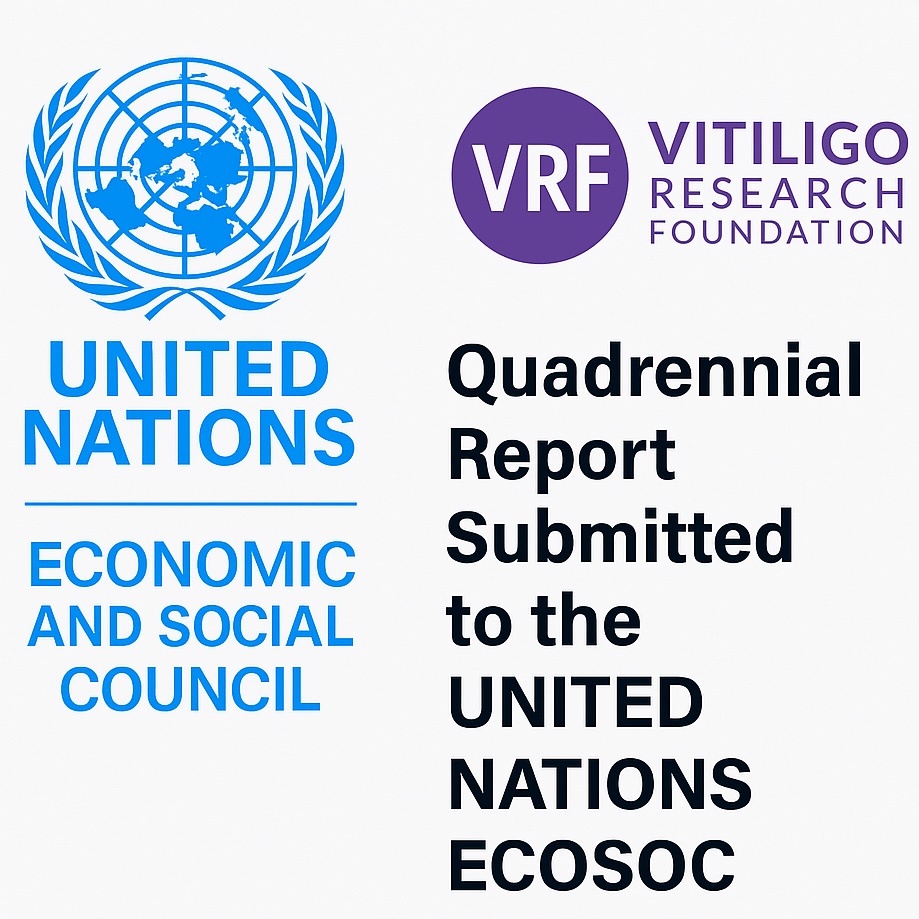New
VR Foundation Submits Quadrennial Report to the United Nations ECOSOC
As part of our ongoing responsibilities as a non-governmental organization in Special Consultative Status with the United Nations Economic and Social Council (ECOSOC), VRF has submitted its 2020–2024 Quadrennial Report.
This consultative status (pdf) allows VRF to contribute to the work of the United Nations by sharing insights, participating in relevant discussions, and raising awareness about the unique challenges faced by people living with vitiligo — especially in relation to global health, inclusion, and disability rights.
What is ECOSOC? ECOSOC is the UN’s main platform for fostering international dialogue on economic, social, and health-related issues. NGOs with consultative status, like VRF, can engage with ECOSOC and its subsidiary bodies, helping shape policies and inform decisions on a global level.
Why it Matters
This recognition has helped VRF advocate for vitiligo on an international stage. One important outcome of our involvement was securing World Vitiligo Day’s inclusion on the UN Calendar of Disability Events — a key step in promoting greater visibility and understanding of the condition.
What’s in the Report?
The report outlines our major initiatives from 2020 through 2023 — including the expansion of World Vitiligo Day to new countries, contributions to international research on patient care and mental health, and our leadership in launching accessible, AI-powered education tools that now reach users in over 60 countries.
Submitting this report is a formal requirement, but it also serves as an important reminder of why we do what we do — and how much there is still to accomplish.
Thank you to everyone who continues to support our work and helps bring visibility to vitiligo at every level, from local communities to international institutions.
– Yan Valle, CEO VR Foundation
Suggested reading:
- VR Foundation joins ECOSOC
- World Vitiligo Day is now marked on the UN Calendar
- History Of The World Vitiligo Day

FAQOther Questions
- Polypodium leucotomos as an adjunct treatment for vitiligo?
The tropical fern Polypodium leucotomos (also known as Polypodium aureum) and its relative Polypodium decumanumhave shown potential benefits for managing vitiligo and other auto...
- Shall I try low-fat diet for my vitiligo?
The link between dietary fat and autoimmune diseases like vitiligo is a compelling yet complex puzzle that continues to intrigue scientists. While the conversation is ongoing, o...
- Shall I take vitamin D for my vitiligo?
Vitamin D plays a central role in the prevention of different inflammatory and chronic diseases. Consuming 1,000–4,000 IU (25–100 mcg) of vitamin D3 daily should be ideal for mo...
Though it is not always easy to treat vitiligo, there is much to be gained by clearly understanding the diagnosis, the future implications, treatment options and their outcomes.
Many people deal with vitiligo while remaining in the public eye, maintaining a positive outlook, and having a successful career.
Copyright (C) Bodolóczki JúliaBy taking a little time to fill in the anonymous questionnaire, you can help researchers better understand and fight vitiligo.
